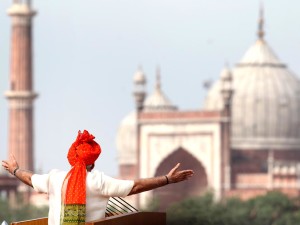In a bid to transform India’s economy, PM Narendra Modi has pledged unlimited reforms at a summit in Gujarat. DW speaks to economist Rajiv Biswas about the likelihood of “Modinomics” succeeding across India.
What exactly is “Modinomics,” and can it really be applied to the rest of India?
“Modinomics” is essentially about having a political leader who is able to create efficient bureaucracy, develop the necessary infrastructure to support industry, and work successfully with foreign and domestic investors to get their projects implemented efficiently and to strict deadlines. As Chief Minister of Gujarat, Modi developed a fearsome reputation for managing his government like a CEO, with efficient and timely performance and a strong anti-corruption stance.
 The state of Gujarat has been one of the fastest-growing states in India over the last decade, outperforming national average GDP growth by an average annual growth rate of 1.7 percent. This significant performance reflects the rapid development of state infrastructure and industry, helped by the state’s reputation as an efficient, business-friendly state with good infrastructure, notably a surplus of electricity generating capacity in the midst of a nation crippled by severe shortages of power.
The state of Gujarat has been one of the fastest-growing states in India over the last decade, outperforming national average GDP growth by an average annual growth rate of 1.7 percent. This significant performance reflects the rapid development of state infrastructure and industry, helped by the state’s reputation as an efficient, business-friendly state with good infrastructure, notably a surplus of electricity generating capacity in the midst of a nation crippled by severe shortages of power.
As prime minister, Modi is trying to bring the same style of government management into the Indian government. While replicating the Gujarat model across such a large and politically disparate country will be difficult, PM Modi’s management style will accelerate economic development in significant parts of India, particularly in states where the BJP Party holds state government.
Even some other states run by opposition parties may eventually face political difficulties if they resist “Modinomics,” since their state electorates may become discontented if they see BJP-run states are achieving better economic development success using “Modinomics” than their own state governments.
Source: http://www.dw.de/will-modinomics-help-boost-indias-development/a-18185326



